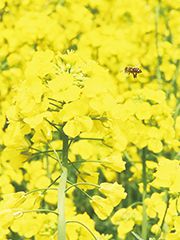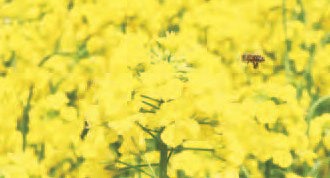Research Results
Eco-friendly restoration of agricultural lands damaged with salt in the tsunami
Rape flower project FY2016

- Yutaka Nakai (Professor of Graduate School of Agricultural Science, Faculty of Agriculture, Tohoku University)
- RISTEX
- The Great East Japan Earthquake response and emergency, support for the practical application of the outcomes of research and development "restoration of agricultural land and agriculture in disaster-hit areas in Tohoku" Chief of practical application (2011)
Contribution to the recovery from the damages of the Great East Japan Earthquake with science
RISTEX (Research Institute of Science and Technology for Society) is supporting the use of research outcomes to solve various social problems with the philosophy that science in society and for society. It implemented six projects for the restoration and rehabilitation from the damages of the Great East Japan Earthquake. One of them was
Restoration with salt-tolerant crops in the family Cruciferae
Tsunamis in the Great East Japan Earthquake damaged 10,000 hectares of paddy fields in Miyagi Prefecture alone. Restoration of agricultural land damaged by the tsunami usually requires civil engineering work by spending enormous amounts of money and time. Yet, professor Yutaka Nakai and his team found the necessity to find measures to restore the agricultural fields while farmers are farming. As a result of preliminary investigations, they found the necessity of removing sediments in areas where sand and mud accumulated on agricultural fields. Meanwhile, planting could not be conducted immediately in areas that were only flooded with seawater without the accumulation of sediment unless the salt was removed by irrigation in which the soil would be submerged in freshwater. Still, the team found some agricultural lands from which salt had been removed thanks to rain for one year and could be restored quickly. They also found that the conditions of damage differed among agricultural lands depending on the distances from the coastline and the terrain. Professor Nakai and his team proposed to the prefecture of Miyagi a project to improve soil and restore agriculture to suit conditions of individual agricultural lands using salt- tolerant crops in the family Cruciferae.

Continuation as a rape flower project
Graduate School of Agricultural Science, Faculty of Agriculture, Tohoku University, where professor Nakai belongs has a gene bank,* which is the only facility in the world where crops in the family Cruciferae are registered and preserved. Research outcomes in Tohoku University were effectively used to select crops in the family Cruciferae, which were suitable for soil improvement depending on the conditions of damage. The final goal of the project is to establish stable production methods of crops in the family Cruciferae, methods of selling rape seed oil, and systems to produce and consume biodiesel fuel from rape seed oil.
The project quickly attracted attention in society from the start. Volunteers from around the country and students of Tohoku University cooperated and smoothly removed mud accumulated on agricultural lands, built ridges, and planted seeds. The project was written in the restoration plan of the city of Sendai, and more than the expected number of companies emerged to support and sponsor the project. With advice from fruit and vegetable wholesalers, the project created the value of the crop as an edible rape plant, which was not included in the initial goal. The produce was actually sold in supermarkets and stores in the city of Sendai. Supporting companies are also building systems for selling rapeseed oil and producing and selling biodiesel fuel.
The rape flower blossomed in May, and the beautiful landscape became a ray of hope for farmers and disaster victims alike. The rape flower sketching and photographing events were popular. The project launched from RISTEX won the Japan Prize of Agricultural Science and the 52nd Yomiuri Prize of Agricultural Science in FY 2015. The rape flower project is still actively continuing today.
*A facility that preserves and manages seeds to conserve genetic resources.
